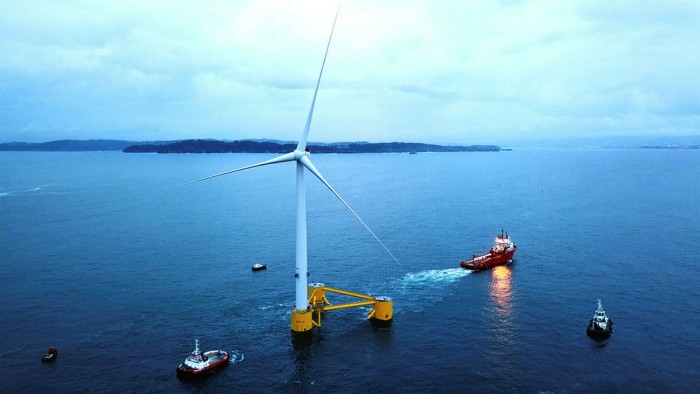Europe’s chance to lead the green technology race

Roula Khalaf, Editor of the FT, selects her favourite stories in this weekly newsletter.
The writer is chief investment officer at Invesco
The market consensus will tell you there is no technology sector in Europe. Sure, there is the odd global beacon in ASML, SAP or Spotify but they are “exceptions that prove the rule”.
If an investor wants technology, growth and innovation they go to the US or Asia. Europe is there in the minds of many investors to provide added cyclical spice at specific points within the economic cycle.
Technology is a broad church, however, and while social media platforms and much of the semiconductor supply chain are US and Asia dominated, there are vibrant technological subsectors such as fintech and healthcare where the field is far more open. And in the case of “green” innovation and technology, Europe has a genuine opportunity to lead.
The factors behind the establishment of the US technology hub, Silicon Valley, contributed significantly to its success, namely technical expertise, access to capital and political impetus. The region combined a skilled scientific research base in local universities such as Stanford, access to plentiful venture capital, and government spending focused on finding technological solutions to the global military/space race.
Similar ingredients exist in terms of Europe’s position in the environmental transition — expertise from its engineering base, significant funding and the clear political will to drive change.
One could argue that the modern-day equivalent of the space race is the race to carbon net zero by 2050, certainly in terms of urgency.
No other region is so focused on that target as Europe. While Green party politics did not start in Europe (that credit goes to the United Tasmania Group of Australia founded in March 1972), Germany’s Green political movement which fought its first federal election in 1980 was the first to gain widespread credibility and influence. As such, environmental considerations have had a seat at the political table in Europe for many years.
The Green revolution is a huge task and extremely capital intensive. According to a report by the Energy Transitions Council, published in September last year, achieving net zero emissions by 2050 would cost an estimated $1tn-$2tn per year, or 1-1.5 per cent of global GDP.
Twice weekly newsletter

Energy is the world’s indispensable business and Energy Source is its newsletter. Every Tuesday and Thursday, direct to your inbox, Energy Source brings you essential news, forward-thinking analysis and insider intelligence. Sign up here.
Rather than private VC firms backing the ideas coming out of a Palo Alto garage, this requires commitment at governmental level to drive the societal shifts required to achieve wholesale transformation; regulations to force changes in supply; subsidies to drive demand, and vast fiscal spending to create the infrastructure required to transition the economy from fossil fuels to renewables in the future.
It is no accident that Europe’s response to the Covid pandemic centred its €750bn fiscal European Recovery Fund on promoting a Green recovery, combining financial firepower with the full might of regulatory power in pursuit of moving corporates, institutions and investors towards that goal.
Political support for green solutions combines with the engineering skillsets embedded in the great corporate successes of Europe in industries such as chemical, automotive, power generation, industrial, construction and utilities.
Required changes include the mass electrification of power systems using renewable energy which will be the foundation of a net zero economy. Europe is home to leading wind turbine manufacturers (Vestas, Nordex and Siemens Gamesa) while its power generators include “super major” leaders in green production (Enel, EDP, Iberdrola and Orsted).
Are you under 35? Which issues concern you most?

We want to hear from readers aged between 16 and 35 on what life is like, and which problems need fixing most urgently. Housing? Education? Jobs? Pensions? The environment? Tell us about your experiences via a short survey.
Hydrogen is a strongly emerging theme in terms of “greening” heavy industry and transportation. Sector leaders in Europe include Plastic Omnium, Elring Klinger and Burckhardt Compression. The region also has leadership in auto electrification with semiconductor companies Infineon and STMicro.
Technologies have been developed to reduce energy consumption in buildings and construction where Europe has companies such as Saint Gobain, Wienerberger and Signify. Europe also is home to worldwide leaders in the “circular” economy for waste and water management such as Veolia and Suez. And there are so many more across the market capitalisation scale.
Competition in this space will surely increase as the global political impetus and spend accelerates, notably in the US and China. But the growth on offer is an opportunity for shareholders and stakeholders to be truly aligned. European companies will be very much in contention.
Comments